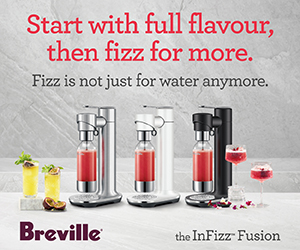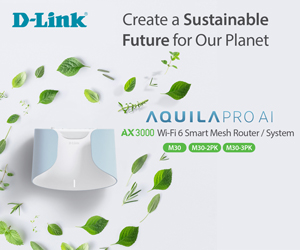It is easy to make good coffee at home, but you need to understand the science behind coffee and buy the right coffee machine for your needs.
Good coffee at home starts with what you like to drink
Coffee is either weak (single shot or with extra water), strong multi-shot black (caffeinated or decaf) or topped up with fat-free, lactose-free, full-fat milk, soy, almond, oat and variations on that theme.
There are about 30 common variations you can order from a barista. Each has different percentages of coffee (shots), milk (cold, heated or frothed), and some have additives like ice cream for iced coffee, whipped cream, flavours (chocolate, caramel, hazelnut, cinnamon) and alcohol like whisky, Kahlúa, or Baileys Irish Cream.

You cannot hope to make all these at home because a) they tend to use different beans/strengths, and b) few, if any, coffee machines make more than a few variations.
The real test is can you and your machine make a coffee as you get from your local barista? Nirvana. The honest answer is that it takes a lot of experimenting, even if you use the same beans and milk.
Coffee machine types
- Italian-style percolator pots for black, robust and Express coffee and excellent for a couple of cups.
- Plunger where coffee grounds are pushed down into hot water. It produces variable black coffee results.
- Pod, where you can make a single (some double) shot. You use different pods for black and milk coffee, each having an intensity rating. Very convenient, but pods are not cheap.
- Dripolator (also called US or Hawaiian), where water drips through coffee grounds in filter paper. Forget this dishwater.
- Manual single-purpose machines with a coffee wand and a steam wand.
- Semi-auto machines with bean hopper, grinder, tamper, choice of settings and optionally a milk delivery system
- Full-auto machines with customisable programs, multiple users and dual boilers to cater for coffee (80-90°) and milk (55-65°).

If in doubt, start with a lower-cost Pod machine (from around $100-300) because you can get different pod coffee strengths and flavours that the whole family can use. While Pods are more costly, you can often get them at half-price on supermarket specials. Lavazza (makes coffee pods and machines) and Nespresso (ditto) dominate. Pods are not brand interchangeable.
A manual machine with a steam wand starts around $300, but if you want a grinder and bean hopper, it will be about $600-900.
If you want convenience, then the semi-auto systems may be for you. These start from about $700 to $2000. Philips, DeLonghi and Breville dominate here.
A professional, fully automatic, dual hopper (two bean types) and separate milk and coffee boilers start at around $4000. Jura and DeLonghi dominate here.
No matter what you buy, it needs to be thoroughly cleaned after use and maintained. The more complex ones may require an annual service.
Beans

Unless you use a pod machine, go to your local barista and buy the same beans (or ground coffee) they use for your coffee. That way, you have a reference point when trying to make good coffee at home. Also, talk to them about the cup size you get, how many ‘shots’ you like, and the milk you use.
You don’t get the best beans at a supermarket. Once you have perfected the barista equivalent, you can experiment with ‘single origin’ (beans from the same country, not necessarily a single type of bean from a single coffee plantation). Or try blends (Arabica and Robusta beans) from places like Mexico, Brazil and Uganda and who knows where now that real coffee is so popular.
Cheap beans will be around $20 to $30 per kilo, and better beans will be $60 or more. But 1kg of beans can make between 50-100 cups of coffee depending on the strength (from 10-20g per cup). In dollar terms, $50 per kg means from 25-50 cents a cup (plus milk). Dedicated coffee drinkers will use more coffee grinds per cup.
Then you must decide on a grind. The finer the grind, the harder it is to pass water through, resulting in strong coffee and the converse for coarse grinds.
Milk is the biggest problem to solve
If the coffee is too watery, it means you have over-steamed the milk. Steam is there to get milk to 55-65°, and a certain amount of froth is the by-product.
Then you have to match the number of coffee shots to the milk portion, which is a function of cup size.
Milk ideally is at fridge temperature, and you should ration it to
- 1-shot (30ml) expresso (Black) in a 100ml cup
- 1-shot (30ml) in a 280ml (8oz) cup – 200-250ml milk
- 2-shots (60ml) in a 400ml (12oz) cup – 300-340ml milk
- 3-shots (90ml) in a 500ml (16oz) cup – 350-400ml milk

Water hardness can have a huge impact, too – read the overview of the research of Dr Adam Carr, the head of CSEC, and how pH affects Australian coffee culture.
Remember two golden rules.
- The larger the cup size, the more coffee grounds are needed. Lower-cost machines will use the same amount of coffee grounds and double the water volume.
- Smaller cup sizes have a better flavour (coffee) to milk ratio
Five tips for better coffee at home
- Find a bean/grind/Pod that you like
- Make sure coffee is around 90°C and milk at 60°C
- Smaller cups generally have better-tasting coffee
- Milk coffee drinkers may need to compromise – its easier to make a flat white
- If you are not sure that you will get the use, start with a lower-cost pod machine







Comments